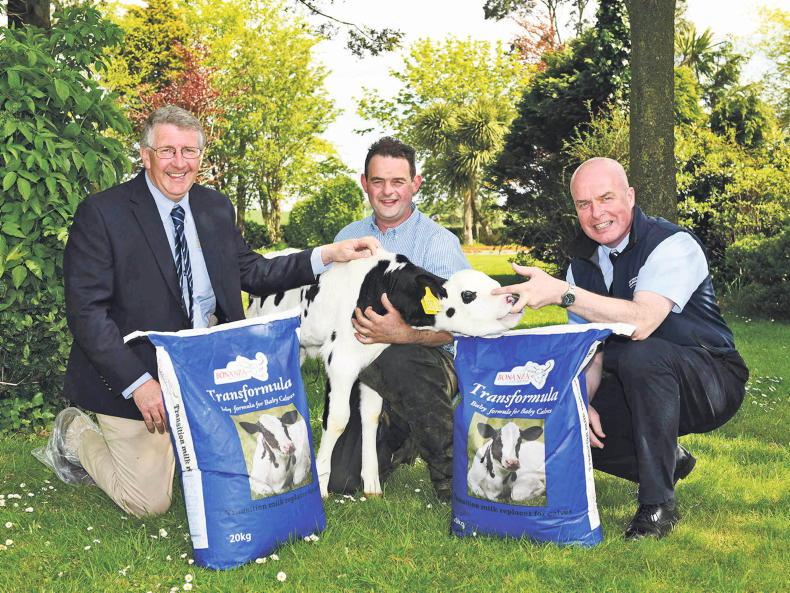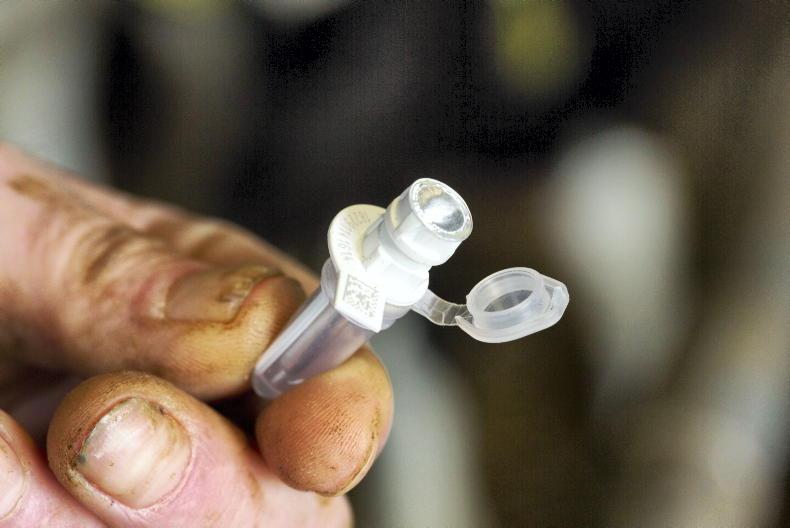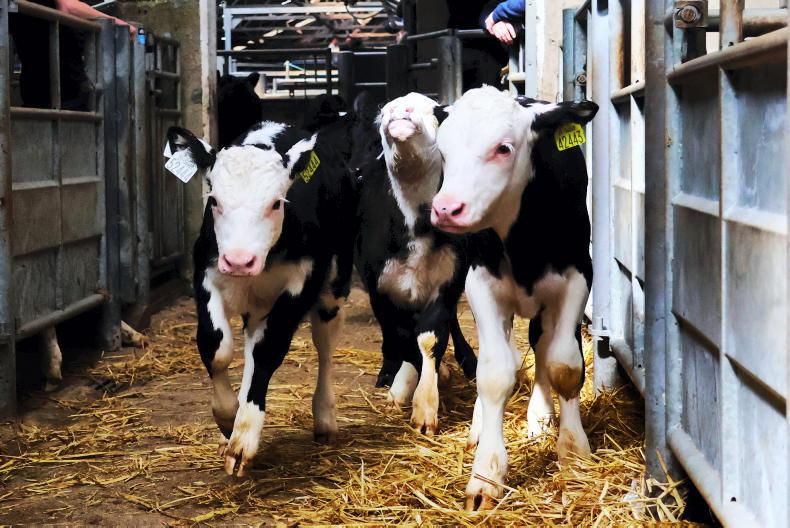David and Stephen Jackson run the high-yielding Ottawa herd of 270 cows at Fairview Farm, Belfast Road, Bangor, Co Antrim.
In 2019, Joe Murphy of Bonanza Calf Nutrition visited the Jacksons with Raymond Bready of feed supplier John Thompson and Son to discuss the calf rearing programme.
They were photographed with a calf born in May of that year.
That animal is now in her second lactation after producing 870kg of milk solids in her first lactation and has a calving index of 376 days.
She was reared on Transformula – the only transition milk replacer for baby calves. Her calf, together with all the other calves on the farm, are also reared on this system.
It is well known that Transformula protects the calf, but new research on transition milk by Bonanza Calf Nutrition has shown an important link with developing the calf’s digestive and immune system.
“This will also protect the young calf, but it has long-term benefits for the calf’s future health, efficiency and longevity,’’ says Joe.
Advice
Much advice on calf rearing is geared towards growth rate, a measure of calf development, but in common with any measure when followed in isolation, it can become a bad measure, Joe suggests.
“Feeding a calf the right amount of transition milk followed by a low heat skim milk-based milk replacer encourages development of the digestive system and promotes health and growth before, during and after weaning.
“Over-feeding milk can delay development of the rumen and the gut microflora which in turn makes weaning a more stressful period for the young calf.
“If they then go through other stressors like further changes in diet, housing and mixing with a different social group it can take some calves months to recover.”
Before they switched to Transformula, the Jacksons had health issues with calves.
For five years, they had sought an effective milk replacer, but could never get calves to drink more than two litres at each feed without causing digestive upsets; even feeding at this rate could take up to 21 days to achieve.
The repercussion was inconsistent calf and youngstock performance, says Stephen. “Beef calves were fit for sale at inconsistent ages and intervals,” he says.
Transformula has been key to enabling his replacement heifers to achieve performance targets as calves no longer get infective and digestive upsets.
It is formulated to have the same benefit for the calf as the milk the cow produces immediately after colostrum.
On Joe’s recommendation, the Jacksons fed Transformula at rates comparable to their existing replacer and, when he was confident that it was delivering better results, levels were increased.
Three litres are now fed twice a day from day 14, following a rapid increase from 1.5 litres twice a day at day two.
With calves now performing consistently thanks to Transformula, Stephen says he is maximising his returns from investment in the Genus RMS breeding system.
He has the confidence to use more sexed semen on heifers and only his elite cows, enabling him to plan future sales of elite heifers.
Transformula is also well suited to the farm’s system of rearing beef calves in individual pens and it means Stephen can now supply his buyer with a consistent supply.
Not only has Transformula had a positive impact on calf health and performance but it has taken much of the stress away from calf rearing.
Consistency
With a guaranteed consistency in the calf rearing unit, Stephen can factor a reduced calving age and consistent beef calf sales more accurately into his budget.
According to Raymond Bready, Transformula has been the best innovation in calf milk feeding since he started working in the industry.
“To have a milk replacer that delivers results consistently better than transition cow’s milk on calves from two days old is unprecedented,” says Raymond.
“Diseases spread by milk to calves over time will be eliminated. The improvement in ease of management and human wellbeing for units trying to eradicate Johne’s disease is unbelievable.”









SHARING OPTIONS